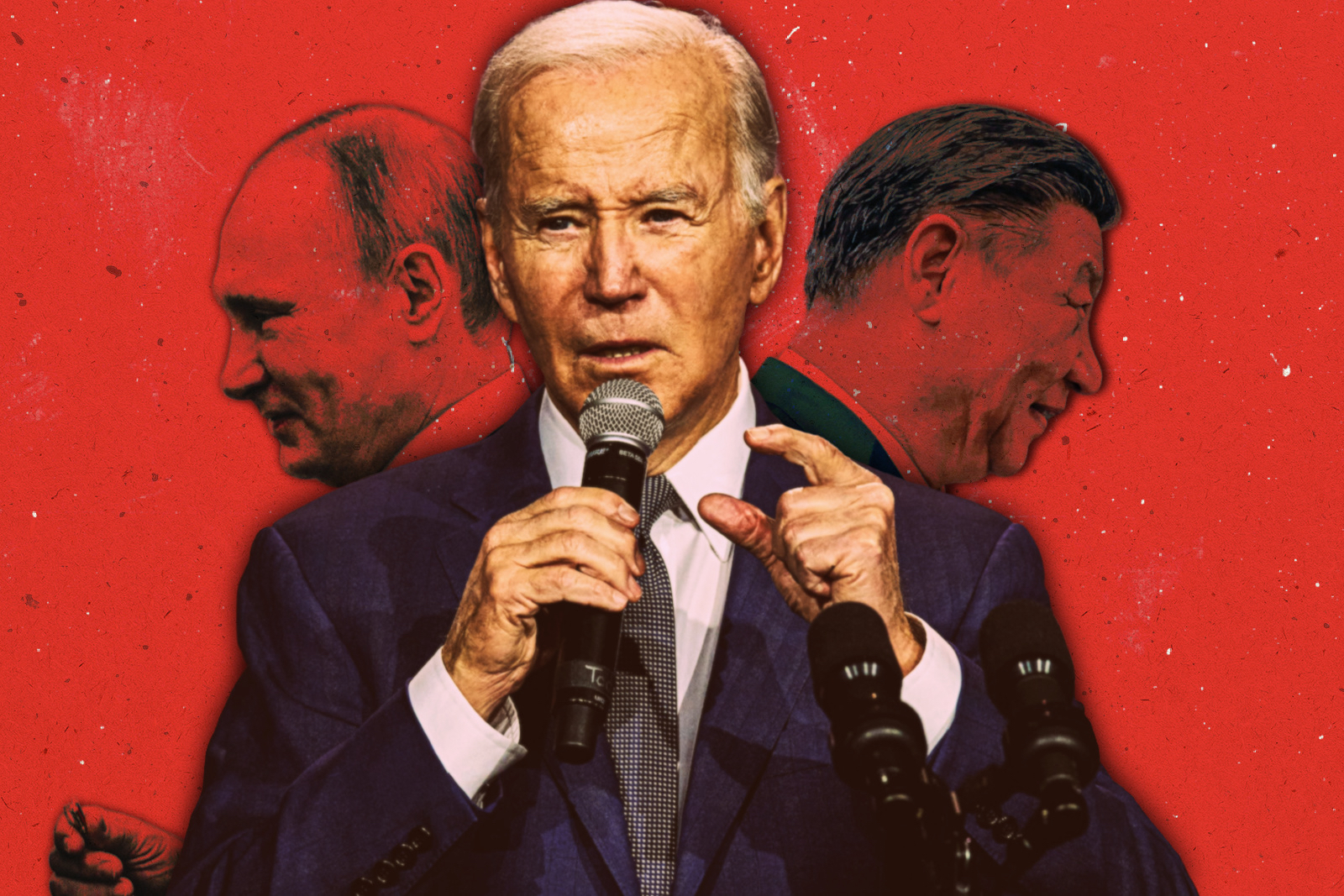
Are the U.S. and China Drifting Toward War?
Within hawkish circles, a stark narrative unfolds: The U.S. and China may be drifting toward a military showdown, a contest for global hegemony. Experts well-acquainted with China’s maneuvers warn that the West could be caught flat-footed should a shooting war break out. At the helm, President Xi Jinping appears to be girding for conflict, prompting scrutiny over the preparedness of the U.S. and its European allies.
U.S. Air Force Secretary Frank Kendall has raised the alarm: China is amassing military might, ostensibly prepping for confrontation with the U.S. He urges America to recalibrate its forces in light of this ascending threat. “China has been reoptimizing its forces for great power competition and to prevail against the U.S. in the Western Pacific for over 20 years. China has been building a military capability specifically designed to achieve their national goals and to do so if opposed by the United States,” Kendall recently said at the Air and Space Forces Association Warfighter Symposium at National Harbor, Maryland.
Andrew Michta, Director of the Scowcroft Strategy Initiative at the Atlantic Council, cautions that national security debates miss a critical point: China and Russia are enhancing their militaries to potentially outmatch the West.
“America’s adversaries are preparing for war. And yet, in Washington, national security debates rarely begin with the basic recognition that China and Russia are building their militaries not to deter but to attack. This should now be the starting point of every conversation on U.S. and allied defense spending,” Michta writes in Politico. “The U.S. thus needs to move beyond its current reactive pronouncements about ‘defending the rules-based order’ and convey to the public what’s really at stake. It needs to stop talking about ‘great power competition’ and instead ask what ‘winning’ this conflict between democracies and dictatorships would actually look like; what a geostrategic map favoring its interests and the interests of other democracies would look like.”
While political leaders may not show overt engagement, the defense sector is advancing toward readiness, alerting the public to the prospects of a war with China.
The DoD’s 2023 report on Chinese military developments is telling. Over the next decade, the PRC aims to dramatically modernize and scale its nuclear capabilities, eclipsing prior efforts. The PRC is likely in possession of over 500 nuclear warheads as of May 2023.
The DoD projects that by 2030, the PRC’s operational nuclear arsenal could exceed 1,000 warheads, in step with Xi’s vision for a “world-class” military by 2049.
Michta’s view merits revisiting. He sees a grand-scale war looming with Russia, Iran, North Korea, and China. Yet, he suggests the West’s volunteer army model is inadequate for such a scale. Instead, he proposes a universal draft for citizens aged 18-21, inclusive of women, reflecting societal progress since the last century. A larger, rejuvenated military could significantly heighten the West’s war preparedness.
Michta warns, “Both China and Russia, and now increasingly Iran, have upended the notion that peaceful competition will play itself out in a globalized economic framework, and Washington needs to wake up to this reality.”
Though deterrence is viable, the West must also gear up for combat, given that Russia and Iran engage in warfare with the West, while China and Iran intensify their military preparations.
As evidenced by the DoD report, China is vigorously upgrading its military and stockpiling weapons. Iran, similarly, has amassed a vast array of missiles and drones, some already used against U.S. interests in the Middle East.
If Iran, Russia, or North Korea adopt a first-strike nuclear doctrine, wherein they move to use nuclear weapons first to save their regimes, the world may spiral into a comprehensive global conflict surpassing anything seen during the First and Second World Wars.
Russia and Iran have been provoking the West through proxy conflicts. North Korea and China’s intentions also raise concerns.
“The situation on the Korean Peninsula is more dangerous than it has been at any time since early June 1950. That may sound overly dramatic, but we believe that, like his grandfather in 1950, Kim Jong-Un has made a strategic decision to go to war. We do not know when or how Kim plans to pull the trigger, but the danger is already far beyond the routine warnings in Washington, Seoul, and Tokyo about Pyongyang’s ‘provocations.’ In other words, we do not see the war preparation themes in North Korean media appearing since the beginning of last year as typical bluster from [North Korea],” Robert L. Carlin and Siegfried Hecker observe at 38 North, a website that tracks developments in North Korea.
As for China, a military conflict between the world’s two biggest economies would lead to the “severing of global supply chains, a blow to confidence and crashing asset prices. It would have catastrophic economic consequences, up to and including a second Great Depression,” according to Larry Elliott, economics editor at The Guardian.
The time for diplomatic courtesies has passed. The imperative now is to brace for possible war. It may not come to pass, but if it does, the West must not be caught unprepared. The stakes are high, and the fallout could be dire. However, the most important thing is for a war not to come to pass. Both Beijing and Washington need to ensure that tensions don’t reach that point.

